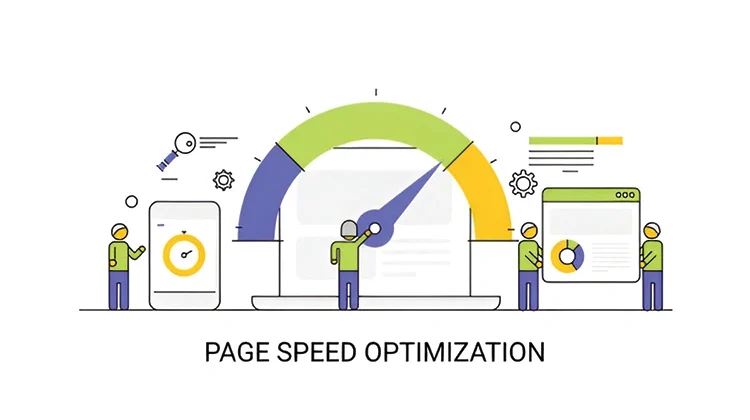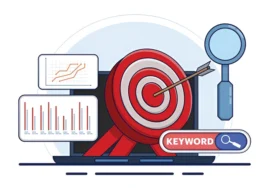
Page Speed Optimization: A Must-Have for SEO and UX
In today’s fast-paced digital world, user experience (UX) plays a crucial role in determining a website’s success. One of the key factors that impact UX is page speed. Slow-loading websites can frustrate users, leading to higher bounce rates and lower conversion rates. Page speed is a critical ranking factor for search engines like Google. So, optimizing your website’s page speed is essential for both SEO and UX.
Understanding Page Speed
Page speed refers to the time it takes for a web page to load in a user’s browser. Several factors contribute to page speed, including:
- Server response time: The time it takes for a server to process the questions and send the page’s content.
- Image optimization: The size and format of images can impact page load times.
- CSS and JavaScript delivery: The way CSS and JavaScript files are delivered can affect page speed.
- HTTP requests: The number of HTTP requests a page makes can also influence load time.
- Leverage browser caching: Caching can help reduce the number of requests and improve page load times for returning visitors.
Prizing Page Speed Optimization
There are several compelling reasons page speed optimization is essential for your website’s success:
1. Improved User Experience:
- Reduced bounce rates: Users are more likely to stay on a website if it loads.
- Increased engagement: Fast-loading pages encourage users to explore more content and interact with the website.
- Enhanced user satisfaction: A positive user experience can lead to increased customer loyalty and repeat business.
2. Better SEO Rankings:
- Google’s ranking factor: Page speed is a confirmed ranking factor for Google’s search algorithm.
- Improved visibility: Faster websites are more likely to appear higher in search engine results pages (SERPs).
- Increased organic traffic: Higher rankings can drive more organic traffic to your website.
3. Higher Conversion Rates:
- Faster conversions: Users are more likely to take desired actions (e.g., making a buy, signing up for a newsletter) on fast-loading websites.
- Improved customer satisfaction: A positive user experience can lead to higher customer satisfaction and increased conversion rates.
Tips for Optimizing Page Speed
Here are the practical tips to help you optimize your website’s page speed:
1. Optimize Images:
- Use image formats: Choose formats like JPEG or PNG based on image content.
- Compress images: Use tools like Tiny PNG or ImageOptim to reduce image file sizes without compromising quality.
- Lazy loading: Defer loading images that are not visible to users.
- Use responsive images: Optimize images for different screen sizes to improve performance on mobile devices.
2. Minify and Combine CSS and JavaScript:
- Minify files: Remove unnecessary characters and white space from CSS and JavaScript files to reduce their size.
- Combine files: Combine multiple CSS and JavaScript files into fewer files to reduce the number of HTTP requests.
- Leverage browser caching: Enable caching for CSS and JavaScript files to improve page load times for returning visitors.
3. Optimize Server Performance:
- Use a fast web host: Choose a reliable web hosting provider with fast servers.
- Implement caching: Utilize server-side caching to store frequently accessed content and reduce server load.
- Optimize database queries: Ensure your database queries are efficient and minimize database load.
4. Reduce HTTP Requests:
- Combine CSS and JavaScript files: As mentioned earlier, combining files can reduce the number of HTTP requests.
- Optimize CSS sprites: Combine multiple small images into a single sprite to reduce the number of requests.
- Use CSS background images: Use CSS to create background images instead of separate image files.
5. Leverage Browser Caching:
- Enable caching: Configure your web server to enable caching for static assets like images, CSS, and JavaScript files.
- Set appropriate cache expiration times: Determine the appropriate cache expiration times based on how often these assets change.
- Use HTTP headers effectively: Utilize HTTP headers like Expires, Cache-Control, and ETag to control caching behavior.
6. Optimized for Mobile Devices:
- Make your website mobile-friendly: Ensure your website is responsive and optimized for different screen sizes.
- Minimize redirects: Avoid unnecessary redirects on mobile devices, as they can slow down page load times.
- Compress images for mobile: Optimize images specifically for mobile devices to improve performance.
7. Using a Content Delivery Network (CDN):
- Improve page load times: A CDN can deliver your website’s content from servers located closer to your users, reducing latency and improving page load times.
- Reduce server load: A CDN can offload traffic from your original server, reducing the strain on your infrastructure.
- Improve reliability: A CDN can help improve the reliability of your website by providing redundancy and fault tolerance.
8. Test and Monitor Page Speed:
- Use page speed testing tools: Utilize tools like Google PageSpeed Insights, GTmetrix, and Pingdom to measure your website’s page speed.
- Monitor performance: Regularly monitor your website’s page speed to identify and address any performance issues.
- Continuously optimize: Make ongoing improvements to your website’s page speed based on testing results and user feedback.
Additional Tips for Page Speed Optimization
In addition to the tips mentioned earlier, here are some further strategies to consider for optimizing your website’s page speed:
1. Minimize JavaScript Execution:
- Defer non-critical JavaScript: Delay the execution of JavaScript code that is not essential for rendering the initial page content.
- Use asynchronous loading: Load JavaScript files asynchronously to prevent blocking the page’s rendering.
- Optimize JavaScript code: Write efficient JavaScript code and avoid unnecessary operations.
2. Reduce Server Load:
- Optimize database queries: Ensure your database queries are efficient and minimize database load.
- Use caching effectively: Implement caching mechanisms to store frequently accessed data and reduce server load.
- Minimize server-side processing: Reduce the amount of processing done on the server side by offloading tasks to the client side when possible.
3. Optimize Third-Party Scripts:
- Minimize the number of third-party scripts: Use only essential third-party scripts and remove unnecessary ones.
- Optimize third-party script loading: Load third-party scripts asynchronously or defer their loading when possible.
- Consider self-hosting third-party scripts: Self-hosting third-party scripts can give you more control over their loading and optimization.
4. Improve DNS Resolution:
- Use a fast DNS provider: Choose a reliable DNS provider with fast response times.
- Use DNS prefetching: Hint to the browser to start resolving DNS for resources that may be needed in the future.
- Reduce DNS lookup: Minimize the number of DNS lookups by using techniques like DNS prefetching and caching.
5. Optimize Web Fonts:
- Choose fonts carefully: Select fonts that are widely supported and have fast loading times.
- Optimize font file formats: Use font formats like WOFF2 or WOFF to reduce file sizes.
- Use font preloading: Preload fonts that are critical to the page’s layout to improve initial render times.
6. Using a Content Delivery Network (CDN):
- Leverage CDN features: Utilize features like browser caching, compression, and image optimization offered by CDNs.
- Choose a CDN with global coverage: Select a CDN with servers located in multiple regions to improve performance for users worldwide.
- Monitor CDN performance: Regularly monitor your CDN’s performance and make adjustments as needed.
7. Continuously Test and Optimize:
- Use page speed testing tools: Regularly test your website’s page speed using tools like Google PageSpeed Insights, GTmetrix, and Pingdom.
- Monitor performance: Keep track of your website’s page speed over time and identify areas for improvement.
- Make ongoing optimizations: Continuously make changes to your website to optimize its page speed based on testing results and user feedback.
By implementing these additional strategies along with the tips mentioned earlier, you can further enhance your website’s page speed and provide a superior user experience. Remember, page speed optimization is an ongoing process, so it’s important to regularly test and monitor your website’s performance to ensure it remains optimized.





